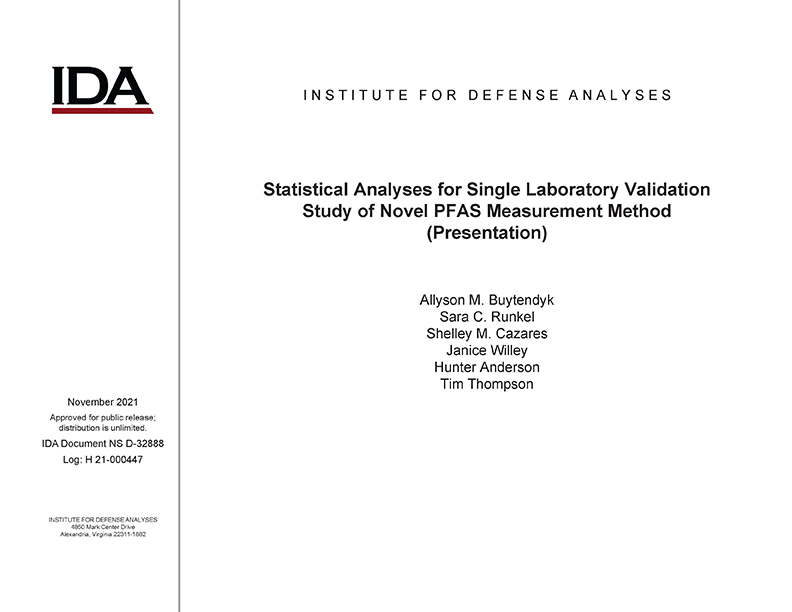Statistical Analyses for Single Laboratory Validation Study of Novel PFAS Measurement Method (Presentation)
November, 2021
IDA document: D-32888
FFRDC: Systems and Analyses Center
Type: Documents
Division: Science and Technology Division,
Science, Systems and Sustainment Division
Authors:
IDA document: D-32888
FFRDC: Systems and Analyses Center
Type: Documents
Division: Science and Technology Division
Authors:
Authors
Allyson M. Buytendyk, Sara C. Runkel, Shelley M. Cazares, Janice Willey (NAVSEA), Hunter Anderson (AFCEC), Tim Thompson (SERDP/ESTCP)
See more authors

